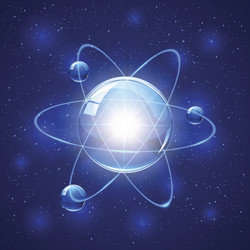Developing advanced detector technologies for accelerators at European research infrastructures
The EU-funded AIDA(opens in new window) (Advanced European infrastructures for detectors at accelerators) project brought together 80 institutes from 23 countries, including 38 beneficiaries and a number of associate partners, to develop advanced infrastructure and detector technologies for future particle accelerators (LHC upgrade, Linear Colliders, Neutrino facilities), in line with the European Strategy for Particle Physics. The project was organized around three main activities: networking, joint research and transnational access. As part of the networking activities, common software tools on detector geometry, alignment and reconstruction, as well as common microelectronics and system integration for future detectors were studied, developed and are being widely used by the HEP community and beyond, having medical or volcanology applications. To foster new collaborations with the European detector industry, 7 Academia-Industry events were held that attracted over 100 companies. An interactive tool was developed to analyse different technologies using publications and patents and is being used by HEP and the Joint Research Centre (JRC). In the framework of transnational access, nearly 700 researchers conducted over 200 projects at European test beam and irradiation facilities (CERN, DESY, JSI, UCL, KIT), resulting in more than 120 publications. Joint research activities were focused on upgrading irradiation and test beam lines (e.g. new beam line characterisation infrastructure at Frascati; new proton irradiation facility and gamma irradiation facility at CERN), as well as the commissioning of a high precision beam tracking telescope. Common data acquisition systems and an online database on the qualification of components after irradiation were provided as a service for users. Finally, innovative new designs of HEP detectors (precision pixel detectors, gaseous and silicon tracking devices, highly granular calorimeters) were evaluated and characterized under AIDA, for the benefit of the European detector R&D community. The R&D performed within AIDA will strengthen the excellence of the European detector community and its leading role in the major HEP experiments. Besides the direct impact on European detector research and industry, AIDA has indirect impact on the society at large. 78 PhD students contributed to AIDA activities and some of the technologies and software developed within the project (ASICs, CMOS sensors, Geant4) can be used in applications outside of particle physics such as medical instrumentation, environmental monitoring and space science.







